Exploring New Realities
The New Revolution at Six Flags
As a fan of both roller coasters and VR, this news really excited me, and had me semi-considering booking an immediate flight to LA. This is the rather boldly named “New Revolution,” the first virtual reality roller coaster in the US. The ride appears to be a conventional roller coaster, only all riders will be donning a Samsung Gear VR headset (made possible thanks to the park's partnership with the electronics brand). This opens up entire new realms of possibility for motion sickness, as riders are taken inside the virtual cockpit of a fighter jet during an alien invasion. The really exciting aspect of the concept in my eyes, however, is that Six Flags could potentially swap out the footage, so that riders would get a completely different experience every time. The New Revolution will operate at 60 miles per hour, and is exclusive to Six Flags theme parks. A tweet from the official Six Flags Twitter account adds that the VR experience will launch sometime in 2016.
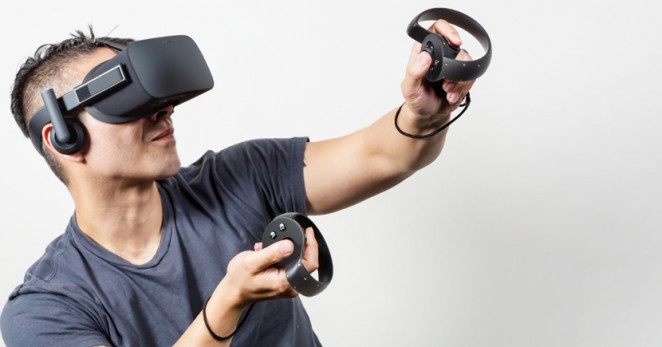
In other VR news, Apple users who want to get in on the ground floor of home VR with the Oculus Rift might be out of luck, as Oculus VR founder Palmer Luckey has said his device won't support Apple computers until they “Prioritise high-end GPUs.” According to Luckey, Apple's computers are simply not equipped to handle the Oculus Rift. Even the Mac Pro isn't capable enough. Luckey said: “You can buy a $6,000 Mac Pro with the top of the line AMD FirePro D700s, and it still doesn't match our recommended spec. If they prioritise higher-end GPUs like they used to for a while back in the day, I think we'd love to support Mac.” Your move Apple!
Coleco Chameleon, A Dodgy SNES?
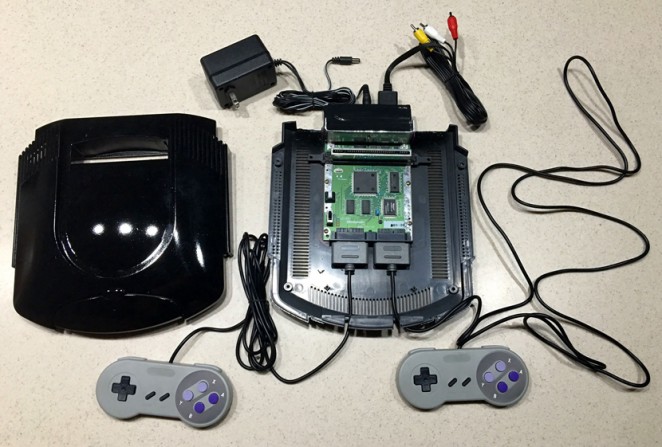
The Coleco Chameleon is a great concept that it now transpires might have been too good to be true. The idea was that the console would be a modern machine inspired by the classic Nintendo and Sega systems of yore, built to play both vintage and brand new cartridge-based games. Created by a company called Retro Video Game Systems, the machine has had a few false starts already, with the initial Kickstarter campaign being pulled within days after the retro gaming community refused to pay the exorbitant price the company was asking. Fast forward a few months and RVGS has signed a deal with classic gaming company Coleco (of Colecovision fame), seriously cutting down on production costs. However, just days before the rejigged console, which uses the template of an Atari Jaguar, but uses a surprisingly complex range of technologies that allow it to replicate a number of older systems, was set to launch its own Kickstarter, the shit started to hit the fan.
“There has also been a whirlwind of interest, speculation and curiosity regarding the insides of the Chameleon” Retro VGS

Retro VGS showed the Coleco Chameleon to the public for the first time at the Toy Fair event in New York a few weeks ago. This was to be the prototype's big unveiling, but it backfired spectacularly. Retro VGS hosted demonstrations at the event, but it wasn't long before people started pointing out that the console was using apparently hardwired SNES controllers (not its own, actually rather nifty looking bespoke controllers) and that it was only playing SNES games. Some people claimed the Coleco Chameleon wasn't a prototype of a new console at all, but a SNES essentially jammed inside an Atari Jaguar casing. To prove the point, someone actually recreated the Frankenstein machine, and it looked exactly the same. The company's response, on Facebook, was to announce a delay to the imminent Kickstarter campaign. But not because it was admitting any fault, instead they simply stated that they wanted to “Make it even better.” It all sounds incredibly suspicious to me, but I'm willing to give them the benefit of the doubt for now, primarily because I kind of want one myself.
Transportation of The Future
Nissan: Introducing the Fuel Station of the Future
There was a raft of exciting developments at the Geneva Motor Show this year. First off, architectural firm Foster + Partners and Nissan unveiled a concept for the future of renewable energy, which included bespoke electric cars store and a distribution system for power around a connected city. The “Fuel Station of the Future proposal” is based on the idea that electric cars could take renewable energy from the sun or wind and then distribute it around a grid. Cars could, for example, be parked next to a home at night and pump energy into the house and when driven to work the next day could be used to power offices. The proposal has been under development for 12 months, and says that “Cars could empower people to share and distribute renewable energy. What if clean energy was so abundant that it became a free commodity to be shared across the city?” It's a wonderful idea, but I have my doubts regarding the sheer size and ambition of the infrastructure required in order to make it all work. At least in the foreseeable future.
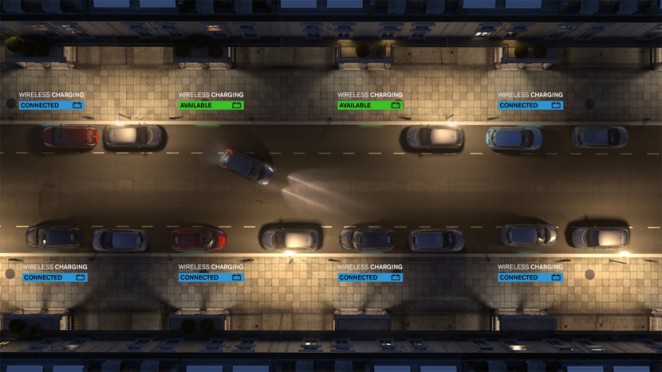
“Integrating zero emission technologies into the built environment is vital in creating smarter, more sustainable cities” David Nelson, Co-Head of Design at Foster + Partners
On the other end of the spectrum, Bugatti unveiled a £1.9 million hypercar, which it describes as the world's most powerful and fastest car. Bugatti's eagerly anticipated successor to its Veyron; the world's previous fastest road vehicle, is reportedly so fast that the French manufacturer limited the new car's maximum speed to just 260 miles per hour for road use. Testing to obtain the Chiron's top speed is due to commence soon. The term hypercar is given the top 1% of high-performance supercars, usually the fastest and most-expensive. To achieve the higher speeds, Bugatti completely redesigned its eight-litre W16 engine, which also powers the Veyron. Lightweight materials such as titanium and carbon fibre were used to reduce the engine's overall weight, while better-performing turbochargers were also fitted. To keep the redesigned engine operating within the optimum temperature range, Bugatti also improved the Veyron's air cooling system. As a result, more than 60,000 litres of air per minute are pumped through the engine. I won't even begin to pretend what that all means, but it definitely sounds impressive. Also, it looks like sex and I want one. And I don't even drive!
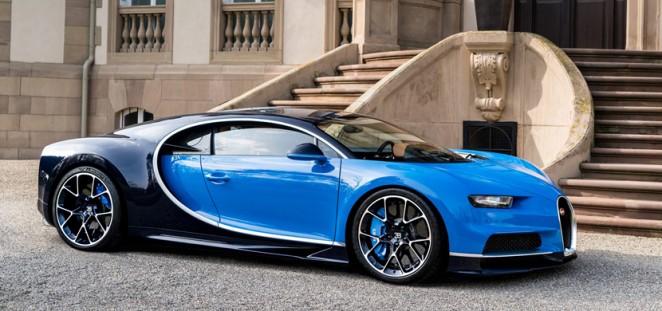
“It is part of human nature to cross boundaries and set new records. The Chiron is the result of our efforts to make the best even better” Bugatti CEO Wolfgang Dürheimer
NASA Develop Supersonic Passenger Bed
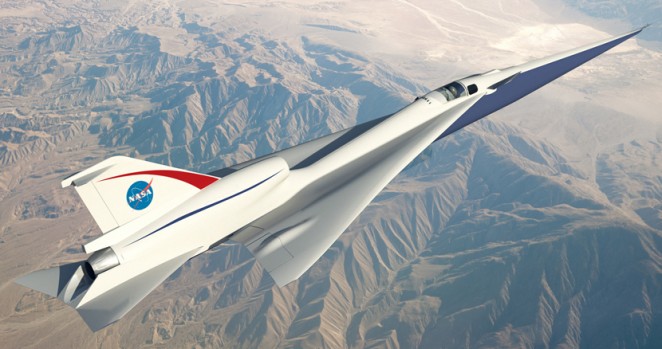
NASA has unveiled a conceptual design for a supersonic plane that would be quieter and more efficient than Concorde. The image, released by the United States space agency, shows a long, slim craft with a pointed nose and curved wings at the rear of the plane. Aircraft designers and operators have long pursued the idea of flying faster than the speed of sound, but commercial supersonic flight ended when the iconic Concorde aircraft went out of service in 2003. One of the challenges Concorde faced was the noise created by its sonic boom, which occurred when travelling faster than the speed of sound. These booms were so loud that most overland flight paths were banned, severely limiting the plane's viability. NASA and aerospace company Lockheed Martin Aeronautics, however, hope to replace the loud boom with a softer, rhythmic thumping sound that will be significantly quieter and therefore allow for overland flights.

“We're continuing Chuck Yeager's supersonic X-plane legacy with this preliminary design for a quieter supersonic jet with an aim toward passenger flight” NASA Administrator Charlie Bolden
The agency has contracted Lockheed Martin to further develop the preliminary design and create baseline requirements for the plane's performance, carrying capacity, noise levels, and other criteria against which a prototype plane will be tested. Over the next 17 months, the company will work with GE Aviation and Tri Models Inc develop the design before proceeding with analytical and wind testing. If all goes well, a commercial flight-ready craft could be in service by 2020. The project is the first in a series of super fast so-called X-planes that the agency hopes to support, bolstering the aerospace industry in the US.
Google's Driverless Quest
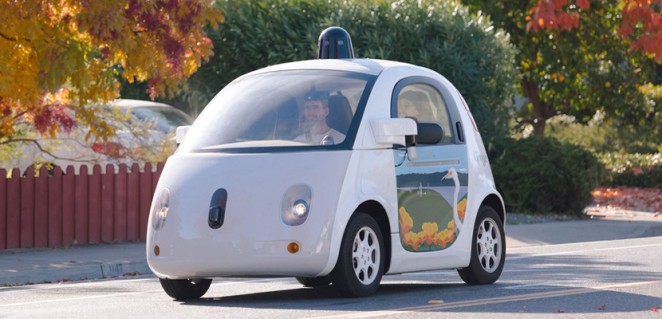
One of Google's self-driving vehicles has collided with a public bus in Mountain View, California according to a recently released accident report. The crash, which occurred near Google headquarters on 14 February 2016, is the first incident in which an autonomous vehicle is believed to have been partly the cause of an accident. Google's self-driving vehicle was operating in autonomous mode at the moment of impact and travelling at less than two miles per hour. The bus was travelling at 15 miles per hour. No injuries were reported. The news of the crash comes just weeks after Google's self-driving car system became the first non-human to be recognised as a driver in the US. Recognition from the US National Highway Traffic Safety Administration was seen as a first step towards changing the law for autonomous cars, however, the recent collision could hold this process back and represents what is widely believed to be the biggest challenge faced by proponents of driverless technology: legal liability.
“We are very excited to be moving forward with a successful planning permission for S2. This achievement further cements Google's expansion in King's Cross and that Google sees King's Cross as its future home for Google London” Joe Borrett, Google's Director of Real Estate and Construction
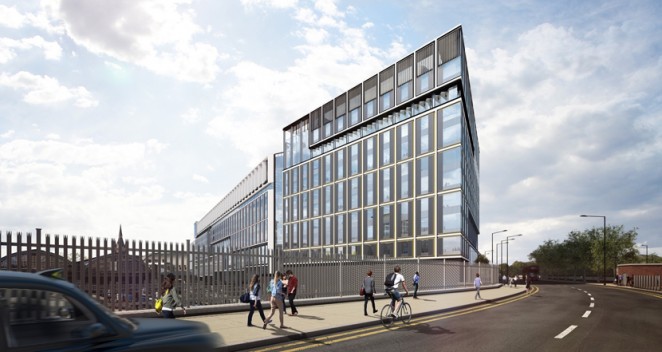
In more positive Google news, UK studio Mossessian Architecture has officially been given permission to start work on their 11-storey office building for Google in London's King's Cross. The S2 building for the tech company, which will be located behind Central Saint Martins arts college, was granted the go-ahead by Camden Council last week. Mossessian Architecture's design features a large roof terrace complete with views over London, and is expected to be completed by 2017. Although it is currently unclear what Google will use the building for, or how many staff will be based there, the company has reportedly agreed a 15-year lease for S2 at around £55 per square foot. Google's current office in Covent Garden was designed by Penson, and features Union Jack flags and vegetables allotments, while its Victoria headquarters by Scott Brownrigg contains dodgem cars, red telephone boxes and beach huts. King's Cross is currently undergoing a major redevelopment involving housing, shops, restaurants and public spaces. Some of the additions include the Central Saint Martins campus by Stanton Williams and a fresh-water bathing pond by Rotterdam studio Ooze Architects and Slovenian artist Marjetica Potrč.
Benjamin Hiorns is a freelance writer and struggling musician from the dark heart of Kidderminster in the UK.






